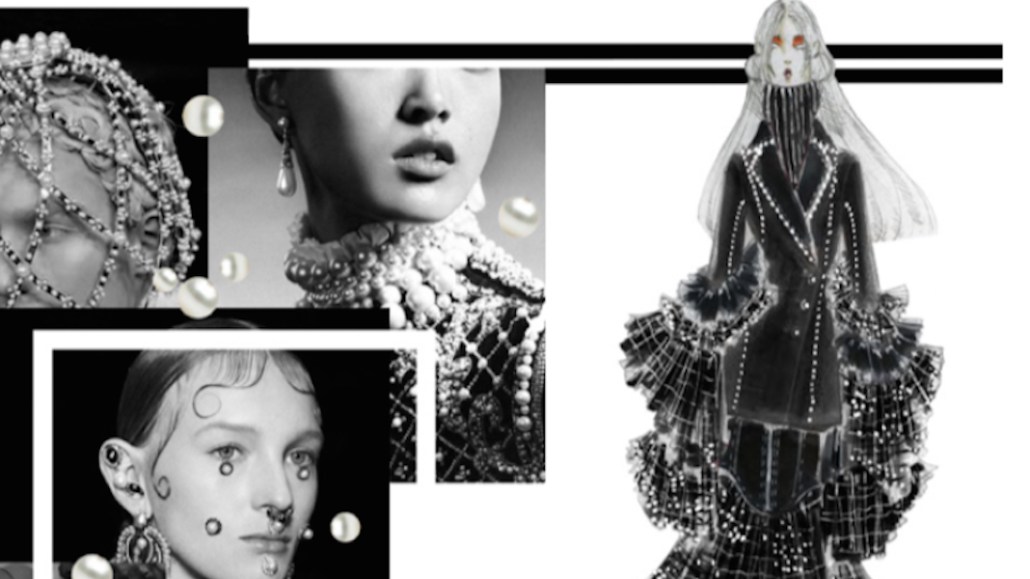Fashion industry leaders are teaching young designers how to sell their collections

Curriculums at fashion and design schools, including the Fashion Institute of Technology, are evolving to account for new priorities like 3-D printing and sustainability. But such flashier topics can frequently take attention away from the basics, like how young designers navigate launching a new brand in today’s retail environment.
As part of its annual Icons celebration, tied to its September issue, Harper’s Bazaar worked with FIT and Infor, a cloud solutions company and design agency that works with fashion brands, to host a student design competition that judged participants on both their craftsmanship and their ability to sell a collection. First, the winning design — a three-piece ensemble created by FIT student Brandon Johnson — was selected at the beginning of June. Then, all participating students, armed with a marketing budget of $15,000 and a retail partner (Macy’s), were asked to put together a business plan that could realistically sell at least 75 percent of the hypothetical inventory over a three-month period. The winning plan was chosen earlier this week.
“For more than 150 years, Bazaar has championed and showcased rising designers such as Bonnie Cashin, Oscar de la Renta, Bill Blass, Geoffrey Beene, Halston, Ralph Lauren, Calvin Klein, Donna Karan, Marc Jacobs, Alexander Wang and more,” said Jeannette Chang, svp and international publishing director of Hearst Magazines International. “It’s important to celebrate and honor up-and-coming talent who are the future of our industry.”
In addition to giving one student designer a prominent platform (fashion influencer Olivia Perez will wear the dress Johnson designed at the Harper’s Bazaar Icons gala tonight during New York Fashion Week), the goal of the combined partnership is to encourage students to think not only about their designs from a creative perspective, but from a commercial one as well.
“Topics like sustainability are important, and customers are demanding that of brands, but that’s not so much about launching a brand,” said Joanne Arbuckle, FIT’s deputy to the president of industry partnerships and collaborative programs, and the former dean of art and design. “Just as you see in this competition, we marry creative with the business as to make it seamless for these students.”
As the industry has become increasingly fragmented, there’s no longer a one-way path to success for designers emerging in the market. Today, the emphasis is on direct relationships with customers, a powerful social media presence and a penetrating digital brand voice, on top of a smart wholesale retail strategy. It’s no longer enough to just sell a collection to Barneys.
“We’ve seen a huge shift over the past decade of brands investing in vertical retail,” said Cooper Smith, a director of research at the digital intelligence firm L2. “But alongside that investment, the category that sees the largest decline in store fleets is direct-to-consumer brands. Smaller brands are hard-pressed on deciding the right strategy today.”
For fashion schools, properly preparing young designers to succeed in today’s fashion industry — one that’s shaken by Amazon and dictated by social media trends — has been a slow-moving effort. Such large organizations struggle to quickly adapt, and there are a lot of new areas of focus, from cutting-edge design technology to sustainability in fashion. Arbuckle said FIT continues to update its curriculum to pull in new lessons in areas like social media and experiential retail, and it loops in retail partners to help demonstrate how it’s done.
“We work frequently with FIT because we want to teach these students the business aspects of their art and how they can commercialize their designs,” said Infor’s svp and gm of retail Corey Tollefson. “While we’re not throwing out the old approaches to developing materials and designing product, we are infusing a modern flair. Things have changed massively in 20 years.”
The main focus of the competition: teaching students to adapt to the crushingly fast pace of the fashion industry today. Tollefson points to fast-fashion knockoffs as a major threat to the high-end fashion industry, saying, “If there’s one lesson to take away from this competition, it’s speed.” Equally important are learning how to build a brand identity and a direct relationship with customers on social media.
Arbuckle said FIT takes on the mindset of “fashion student as entrepreneur.”

The judging criteria of the FIT/Infor/Harper’s Bazaar competition
The winning pitch centered around a see-now-buy-now retail strategy, selling a dress through a livestream on Perez’s Instagram account as well as in Macy’s stores.
“The way the retail world is today with all its issues has an impact on launching your brand. But we look at the positive side and see how social media has allowed so many new brands to reach a target market and reach so many more than before,” said Arbuckle. “We are very sensitive to those nuts and bolts of launching a brand today.”
More in Marketing

Zero-click search is changing how small brands show up online — and spend
To appease the AI powers that be, brands are prioritizing things like blogs, brand content and landing pages.

More creators, less money: Creator economy expansion leaves mid-tier creators behind
As brands get pickier and budgets tighten, mid-tier creators are finding fewer deals in the booming influencer economy.

‘Still not a top tier ad platform’: Advertisers on Linda Yaccarino’s departure as CEO of X
Linda Yaccarino — the CEO who was never really in charge.









